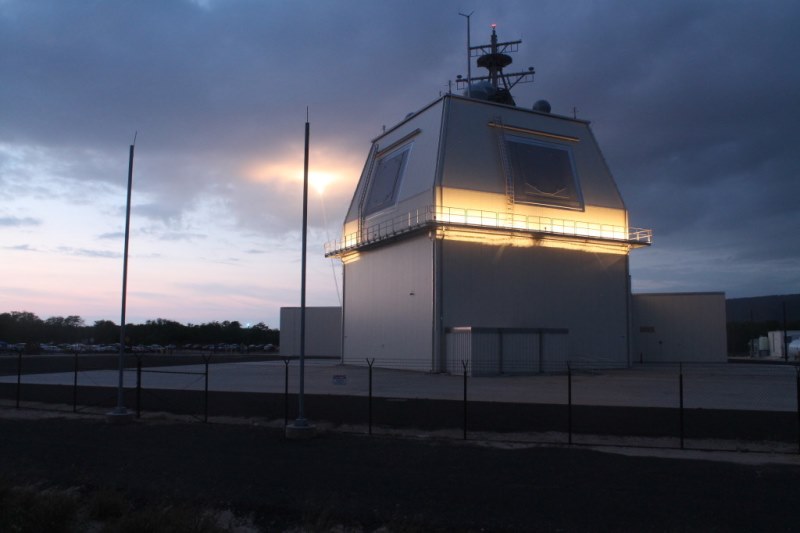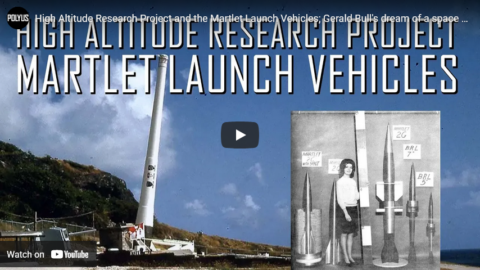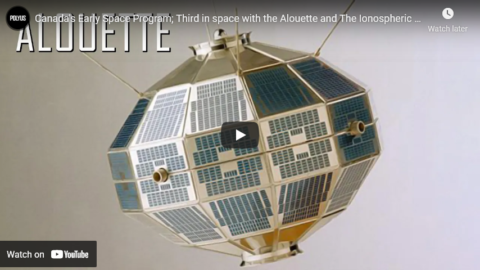Real Engineering
Published 18 Feb 2023
(more…)
May 28, 2023
This Gun Could Reach Space
June 27, 2022
High Altitude Research Project and the Martlet Launch Vehicles; Gerald Bull’s dream of a space gun
Polyus Studios
Published 26 Jun 2022Support me on Patreon – https://www.patreon.com/polyusstudios
In 1968, 7 countries were operating satellites in orbit, while only 3 countries had the ability to launch one themselves. But they were on the verge of being joined by a Canadian university. Starting in the early 1960s, Montreal, Quebec based McGill University developed and began testing an ambitious concept to place small satellites into orbit. It was the culmination of decades of pioneering work across multiple fields. It was the High Altitude Research Project and the Martlet orbital launch vehicle.
Music:
Denmark – Portland Cello Project
Your Suggestions – Unicorn HeadsChapters:
0:00 Introduction
0:28 Bull’s early career
3:00 Birth of the Program
7:47 Getting HARP off the ground
10:52 Martlet 1
13:26 Early Martlet 2
15:41 Martlet 3
18:05 Enhanced Martlet 2s
21:40 Other HARP Guns
24:19 Quest for an Orbital Capability, the 2G-1
27:53 Satellite Delivery Model, Martlet 4
30:27 Advanced gun research
31:30 Hard times for HARP
32:30 Bull’s Ambition Gets The Best Of Him
35:28 Legacy of the HARP Project
October 27, 2021
Alouette and The Ionospheric Satellites; A Beginners Guide To The Early Canadian Space Program
Polyus Studios
Published 22 Aug 2109Don’t forget to like the video and subscribe to my channel!
Support me on Patreon – https://www.patreon.com/polyusstudiosIn the early 1960s Canada was among the early pioneers of space technology and research. Scientists and engineers took advantage of then cutting edge technologies like the transistor and solar panels, to produce the Alouette and ISIS series of satellites. It was an immense engineering challenge that represented the high water mark of a tradition of ionospheric research that began back before the establishment of Canada as a nation. The Alouette and ISIS series of satellites produced more than 1200 research papers exploring all aspects of the Earth’s ionosphere, the aurora, and other phenomena. They also demonstrated to the world that Canada was a world leader in peaceful space technology.
0:00 Intro
0:29 Arctic exploration and early magnetic field research
2:40 New technologies promote new questions
5:35 Birth of the Canadian Space Program
9:25 Testing and Launch of Alouette
13:04 ISIS series of satellites
17:12 Legacy and ConclusionMusic:
“Denmark” – Portland Cello ProjectResearch sources:
https://nssdc.gsfc.nasa.gov/nmc/space…
https://space.skyrocket.de/doc_sdat/i…
http://www.friendsofcrc.ca/Projects/I…
https://www.ieee.ca/millennium/alouet…
https://www.ieee.ca/millennium/isis/i…
http://www.asc-csa.gc.ca/eng/satellit…
http://friendsofcrc.ca/Projects/ISIS/…
https://nssdc.gsfc.nasa.gov/nmc/space…
http://acuriousguy.blogspot.com/2017/…
https://photostories.ca/explore/photo…
http://www.ieee.dreamhosters.com/digl…
https://www.ieee.ca/millennium/alouet…#Spacecraft #PolyusStudios #CanadianAerospace
September 22, 2020
An idea for the blighted 21st century — Radio Free Earth and an updated “Liberator” pistol
In the most recent edition of the Libertarian Enterprise, L. Neil Smith considers a couple of ways to help oppressed peoples all around the world:

An example of the original Liberator pistol from WW2.
Screen capture from a Forgotten Weapons video.
The first is an idea that I originally read about in the 1950s in a short story by Arthur C. Clarke, author of 2001: A Space Odyssey. There’s a satisfying irony about using it against the Chinese communists,since Clarke himself was an ardent collectivist (among other nasty things) and wrote about it as a way that communists might bring Western Civilization to its knees. Building on Clarke’s original concept, imagine a tiny radio receiver, tuned only to a single frequency, with no moving parts, small enough to fit almost entirely into the human ear, and with the right coloration to be virtually invisible.
Now imagine a geostationary satellite standing 22,300 miles in space over China. The basic idea is like Radio Free Europe, but with significant differences. Instead of dull propaganda (I listened to some of those RFE and Voice of America broadcasts), there would be readings by celebrities like James Earl Jones and Dennis Haysbert from the works of Thomas Paine, Thomas Jefferson, George Mason, and other Founding Fathers. Nineteenth century thinkers like Herbert Spencer, Auberon Herbert, Lysander Spooner, and Benjamin Tucker would be featured, as well, along with H.L Mencken, Ludwig von Mises, Rose Wilder Lane, Ayn Rand, Friedrich Hayeck, and Milton Friedman from the twentieth century.
Very importantly, these lessons in liberty would be interspersed by good, old-fashioned action-adventure radio drama, featuring the works of individualist scribblers like Robert A. Heinlein, H. Beam Piper, Poul Anderson, and little old me, Underdog. Jammed in there just to keep the comrades listening avidly, there would be what I like to think of as “weaponized pornography”, high-quality dramatic readings of Pauline Reage’s Story of O, among others. If it works in Chinese, it will work in Arabic or Farsi, as well.
The geostationary satellite would beam all these offerings down twenty-four hours a day to the millions of little radios that we have air-dropped or otherwise smuggled to the citizenry. Sailors on their brand-new ships would probably listen in, as well. The Chicoms would try their damnedest to outlaw them and maybe even shoot the satellite down, but 22,300 miles is a long way away, and battle-lasers can defeat missiles laboring at the peak of their climb. Such satellites are relatively cheap and replaceable, especially if they can prevent World War III, and we’d keep sending the Chinese those little radios.
That’s Idea #1. Idea #2 involves a World War II project most gun enthusiasts know about called the “FP-45 Liberator Pistol”. A million of the crude, stamped, single-shot firearms, unrifled and chambered for the .45 automatic pistol cartridge, were manufactured by the Guide Lamp Division of General Motors at a total cost of $2.10 apiece (that’s $31.55 today). The whole package contained a few spare cartridges, a wooden ejection rod, and a comic book illustration showing how to use it: sneak up on a Nazi soldier, blow his brains out, and steal his rifle.
You were supposed to throw the pistol away, but me, I would have kept it. You never know when you might need it. The Liberators are so scarce today that the bidding starts at $600, meaning that there are hundreds of thousands of the ugly little roscoes still tucked away in barns and attics in eastern Europe. Wikipedia, no bastion of liberty, claims that they were all rounded up and destroyed by Allied troops (which probably cost more than the guns did). If true, it means that I was right when I wrote in my first novel, The Probability Broach, that WWII was basically a conflict between competing brands of fascism.
June 28, 2020
Why is the British government buying part of OneWeb?
As Tim Worstall points out, the British government’s decision to buy 20% of the satellite company OneWeb doesn’t actually make any economic sense:
… OneWeb – in which the UK will own a 20% stake following the investment – currently operates a completely different type of satellite network from that typically used to run such navigation systems.
“The fundamental starting point is, yes, we’ve bought the wrong satellites,” said Dr Bleddyn Bowen, a space policy expert at the University of Leicester. “OneWeb is working on basically the same idea as Elon Musk’s Starlink: a mega-constellation of satellites in low Earth orbit, which are used to connect people on the ground to the internet.
The actual answer is that we don’t need to buy into anyone’s system at all. Just as we shouldn’t have into [EU satellite system] Galileo in the first place.
For, d’ye see, GPS is a public good. The US allows anyone to use the signals. Not that they can really stop people doing so either. Not unless they take the whole system down.
So, there’s the US system, free for all to use. A global public good – this means it doesn’t matter who provides it, it is there. It also means we don’t need our own. Which, in turn, means we don’t and didn’t need the Galileo system, let alone another one after we’ve left that.
As I said, politics not even asking the right question. They’re asking “which new system should we have?” when the correct questions is “why do we need a new system?” and given that the answer to the second is we don’t therefore the first is entirely moot.
Even setting aside the question of what the satellite system will be capable of, as the market is already in the process of developing and deploying the equipment, why does the British government think its investment is necessary?
April 27, 2020
Entrepreneurs beyond the atmosphere
Doug Bandow reacts to Donald Trump’s executive order that begins to clear the way for private enterprise in space:

Taken by Apollo 8 crewmember Bill Anders on December 24, 1968, at mission time 075:49:07 (16:40 UTC), while in orbit around the Moon, showing the Earth rising above the lunar horizon.
Despite the current chaos caused by the coronavirus, Washington still must consider the future. Which explains the president’s new executive order that would allow private resource development on the moon and asteroids. It clearly rejects the “common heritage of mankind” rhetoric deployed by the United Nations on behalf of the Law of the Sea Treaty, which four decades ago created a special UN body to seize control of seabed resources.
The Future of Space Exploration
The EO issued earlier this month explained that
Successful long-term exploration and scientific discovery of the Moon, Mars, and other celestial bodies will require partnership with commercial entities to recover and use resources, including water and certain minerals, in outer space.
The measure began the process of revising an uncertain legal regime which currently discourages private sector development.
The administration pointed to the 1979 Agreement Governing the Activities of States on the Moon and Other Celestial Bodies (known as the Moon treaty) and the 1967 Treaty on Principles Governing the Activities of State in the Exploration and Use of Outer Space, including the Moon and Other Celestial Bodies (typically called the Outer Space Treaty). Neither is friendly to entrepreneurs or explorers with a commercial bent.
In response, the president announced that
Americans should have the right to engage in commercial exploration, recovery, and use of resources in outer space, consistent with applicable law. Outer space is a legally and physically unique domain of human activity, and the United States does not view it as a global commons. Accordingly, it shall be the policy of the United States to encourage international support for the public and private recovery and use of resources in outer space, consistent with applicable law.
Space is a Long-Term Prospect
The document’s main directive is for the Secretary of State, in cooperation with other agencies, to “take all appropriate actions to encourage international support for the public and private recovery and use of resources in outer space.” The secretary is to “negotiate joint statements and bilateral and multilateral arrangements with foreign states regarding safe and sustainable operations for the public and private recovery and use of space resources.”
Obviously, the administration’s attention is directed elsewhere at the moment. However, the potential benefits of turning to space are significant. The value of scientific research is obvious and continues to drive government agencies such as NASA. Launch services and space tourism have caught the interest of private operators. Such activities offer fewer legal and practical difficulties than attempting to establish some sort of long-term presence in the great beyond.
More complex development of space is a longer-term prospect. However, that makes it even more imperative to encourage innovation by creating institutions and incentives that encourage responsible development of what truly is the “final frontier.”
January 31, 2020
Why The US Military Made GPS Free-To-Use
Real Engineering
Published 16 Jun 2017Get your Real Engineering shirts at: https://store.dftba.com/collections/r…
Patreon:
https://www.patreon.com/user?u=282505…
Instagram:
https://www.instagram.com/brianjamesm…
Twitter:
https://twitter.com/Fiosracht
Website:
http://www.RealEngineering.netThank you to my patreon supporters: Adam Flohr, darth patron, Zoltan Gramantik, Henning Basma, Karl Andersson, Mark Govea, Mershal Alshammari, Hank Green, Tony Kuchta, Jason A. Diegmueller, Chris Plays Games, William Leu, Frejden Jarrett, Vincent Mooney, Ian Dundore, John & Becki Johnston. Nevin Spoljaric
Once again thank you to Maeson for his amazing music. Check out his soundcloud here: https://soundcloud.com/maeson-1/tracks
January 30, 2020
Upgrading NORAD’s capabilities with AN/SPY-7(V)1 radar (aka “Aegis Ashore”)
Ted Campbell on the need to upgrade NORAD radar installations as part of a general refurbishment of the alliance’s capabilities:

Lockheed Martin’s Solid State Radar has been designated as AN/SPY-7(V)1 by the US government.
Image from Lockheed Martin/PRNewsfoto.
One of the elements which might be considered in modernizing and enhancing the North American Aerospace Defence Command (NORAD) surveillance, warning and control system is a new radar and some people have suggested that the AN/SPY-7(V)1 radar, sometimes called Aegis Ashore, might be a useful (and proven, it is in use, on land, in Japan, and will be fitted on Canada’s new Type 26 (destroyer-frigate) combat ships) solution. This radar is eminently suitable to be part of an enhanced (conventional) NORAD and of a CANUS continental ballistic missile defence system.
There are many technical (and logistical) advantages to using that radar on both our, Canadian, warships and in a land-based role, too.
The AN/SPY-7(V)1 radar produces a lot more information than do the current AN/FPS-117 and AN/FPS-124 radars which are used in the NORAD role, today, and were built in the 1980s using 1960s and ’70s technology.
(Please don’t worry about the AN/*** designations. They are part of a very sensible American system which was designed to make it simpler to identify both Army and Navy systems (hence the AN/ at the beginning). The three letters following the AN/ describe the system:
- The first letter describes the installation. F means Fixed, on the ground (land) and S means on a ship;
- The second letter means the type of equipment, and P means radar; and
- The third letter means purpose. S means search (detection and locating) and Y surveillance and control.
Thus the SPY-7 is a shipborne surveillance radar and the FPS-117 is fixed (land-based) search radar. The numbers just differentiate one system from another.)
If Canada chooses an advanced radar, like the SPY-7, two engineering problems will need to be addressed:
- First, these things use a lot more power than do the existing radars; and
- Second, they produce much, much more information which needs to be “transported” instantly, to control centres in places like Canadian Forces Base North Bay, where all the data from all the radars is analyzed and used to effect NORAD’s mission. If the radar sites are located below (about) 72°N, as would be the case for coastal radars in BC, NS and NL, this is not a huge problem because the station is within the “footprint” of the big, high bandwidth satellites in geostationary orbit. But if the radar site is too far North then a terrestrial (possibly microwave, maybe tropospheric scatter) network (in which each station needs electrical power, too) will have to be installed to move the data to a satellite ground station. (Or a non-geostationary, high bandwidth, satellite system will have to be deployed.)
November 29, 2019
History of Space Travel – Red Star – Extra History – #4
Extra Credits
Published 28 Nov 2019Start your Warframe journey now and prepare to face your personal nemesis, the Kuva Lich — an enemy that only grows stronger with every defeat. Take down this deadly foe, then get ready to take flight in Empyrean! Coming soon! http://bit.ly/EHWarframe
While rockets had been proven to be indispensable to the Second World War, the idea to send people up into orbit was still seen as fantasy. Space was important only as a method to further the range of missiles meant to land oceans away from their original launch point. But a man named Korolev will change all of that, with work so secretive, he will be referred to as Chief Designer for nearly his entire life. But we all know the name of his first project into space: Sputnik.
From the comments:
Extra Credits
1 day ago
We weren’t able to fit her into the episode, but the other famous first cosmonaut in space is Laika, the Soviet space dog. She was a stray who was taken in by the program to test the Sputnik 2 and some of its life support features (like a coolant fan). Unfortunately, Laika did not return from her mission alive but she’s still regarded highly in the history of space flight and has become a symbol for the space race and animal testing in general. Look her up!
I remember reading in Robert Heinlein’s Expanded Universe of the day on his tour of the Soviet Union in 1960 when he and his wife were told by a group of Red Army cadets of a Soviet rocket launch carrying a human into orbit for the first time. The story was officially denied and the capsule was said to be unmanned after all. Wikipedia says:
According to Gagarin’s biography, these rumours were likely started as a result of two Vostok missions equipped with dummies (Ivan Ivanovich) and human voice tape recordings (to test if the radio worked) that were made just prior to Gagarin’s flight.
In a U.S. press conference on February 23, 1962, colonel Barney Oldfield revealed that an uncrewed space capsule had indeed been orbiting the Earth since 1960, as it had become jammed into its booster rocket. According to the NASA NSSDC Master Catalog, Korabl Sputnik 1, designated at the time 1KP or Vostok 1P, did launch on May 15, 1960 (one year before Gagarin). It was a prototype of the later Zenit and Vostok launch vehicles. The onboard TDU (Braking Engine Unit) had ordered the retrorockets to fire to recover, but due to a malfunction of the attitude control system, the spacecraft was oriented upside-down, and the firing put the craft into a higher orbit. The re-entry capsule lacked a heat shield as there were no plans to recover it. Engineers had planned to use the vessel’s telemetry data to determine if the guidance system had functioned correctly, so recovery was unnecessary.
June 17, 2019
How does RADAR work? | James May Q&A | Head Squeeze
BBC Earth Lab
Published on 29 Nov 2013How does RADAR work? It’s a bit like shouting very loudly at a cliff and waiting for the echo to come back to you. Whether you use rude words or not is completely up to you.
RADAR is emitting a sound wave and waiting for the echo to come back to you. By timing the returning echo you can work out where exactly another object is.
The really interesting thing about radar is if you use multiple angled receivers you can work out the position and height of a target. This technology was essential in winning the Battle of Britain in 1940.
But that was 1940, what about radar now? Is it as defunct as the 3 ½ inch floppy disk? Well, no actually. Radar is still pretty important in the military but the technology is a lot more advanced. In fact each time you connect to a sat nav to figure out where you are, you are using the network of satellites that calculate your position using the same principles of radar.
Thanks to Alyssa Ann for her portrait of Jeremy Clarkson: http://alyssamenold.com/
March 24, 2018
James May doesn’t trust Sat Navs | Q&A extras | HeadSqueeze
BBC Earth Lab
Published on 27 Sep 2013Don’t trust the Sat Nav! Speaking from experience, James thinks we shouldn’t blindly trust a machine. Get a map!
February 10, 2018
US military will disrupt GPS signals in western states during certain periods of the Red Flag wargames
For much of February — and in some places, well into March — the US military will be jamming signals from the Global Positioning System as part of training exercises over vast swaths of the Western United States, as well as in smaller areas surrounding major military facilities across the US.
[…]
The jamming will be restricted for the most part to periods between 11pm and 2am Eastern Time. This is when commercial air traffic is at its least dense, so the impact on air travel should be negligible. But the exact times may vary. And jamming tests for other exercises during the same period — including some at or off the coast of Navy nuclear sub bases at Bangor in Washington and Kings Bay, Georgia — may have an impact on commercial shipping and fishing vessels.
Red Flag 18-1 includes participants from all four service branches of the Department of Defense, as well as units of the British Royal Air Force and the Royal Australian Air Force. “[This] primarily is a strike package focused training venue,” said Colonel Michael Mathes, commander of the 414th Combat Training Squadron at Nellis. But while strike packages — practice bombing missions and stand-off missile attacks — are the end product, the exercise also includes a “cyber” component, in which the adversary team will attempt to disrupt operations through everything from phishing emails to electronic warfare.
More information at Ars Technica.
January 3, 2018
BAHFest London 2017 – Louie Terrill: Why the Kessler Syndrome is key to humanity’s future
BAHFest
Published on Dec 11, 2017Watch Louie Terrill at BAHFest London 2017 present his theory, “Making sure we’re all in this together: Why the Kessler Syndrome is key to humanity’s future.”
BAHFest is the Festival of Bad Ad Hoc Hypotheses, a celebration of well-researched, logically explained, and clearly wrong scientific theory. Additional information is available at http://bahfest.com/
October 18, 2017
Are There Parts of German WW1 Warships in Space?
Real Engineering
Published on 19 Jul 2017
October 2, 2015
Something to worry about – chances of a Kessler cascade
If you’re the worrying type, Charles Stross has a bit more for you to fit into your nightmares:
Today, the commercial exploitation of outer space appears to be a growth area. Barely a week goes by without a satellite launch somewhere on the planet. SpaceX has a gigantic order book and a contract to ferry astronauts to the ISS, probably starting in 2018; United Launch Alliance have a similar manned space taxi under development, and there are multiple competing projects under way to fill low earth orbit with constellations of hundreds of small data relay satellites to bring internet connectivity to the entire planet. For the first time since the 1960s it’s beginning to look as if human activity beyond low earth orbit is a distinct possibility within the next decade.
But there’s a fly in the ointment.
Kessler Syndrome, or collisional cascading, is a nightmare scenario for space activity. Proposed by NASA scientist Donald Kessler in 1978, it proposes that at a certain critical density, orbiting debris shed by satellites and launch vehicles will begin to impact on and shatter other satellites, producing a cascade of more debris, so that the probability of any given satellite being hit rises, leading to a chain reaction that effectively renders access to low earth orbit unacceptably hazardous.
This isn’t just fantasy. There are an estimated 300,000 pieces of debris already in orbit; a satellite is destroyed every year by an impact event. Even a fleck of shed paint a tenth of a millimeter across carries as much kinetic energy as a rifle bullet when it’s traveling at orbital velocity, and the majority of this crud is clustered in low orbit, with a secondary belt of bits in geosychronous orbit as well. The ISS carries patch kits in case of a micro-particle impact and periodically has to expend fuel to dodge dead satellites drifting into its orbit; on occasion the US space shuttles suffered windscreen impacts that necessitated ground repairs.
If a Kessler cascade erupts in low earth orbit, launching new satellites or manned spacecraft will become very hazardous, equivalent to running across a field under beaten fire from a machine gun with an infinite ammunition supply. Sooner or later you’ll be hit. And the debris stays in orbit for a very long time, typically years to decades (centuries or millennia for the particles in higher orbits).
How about a kickstarter campaign for laser-equipped orbit-cleaning satellites? Sweep up our orbital trash before it becomes a huge problem. If you’ve read Neal Stephenson’s Seveneves, you’ve already got the image of a really extreme result of too much space junk (in the case of the novel, it was shattered pieces of the moon creating the Kessler cascade).









